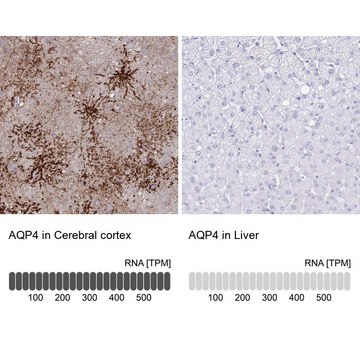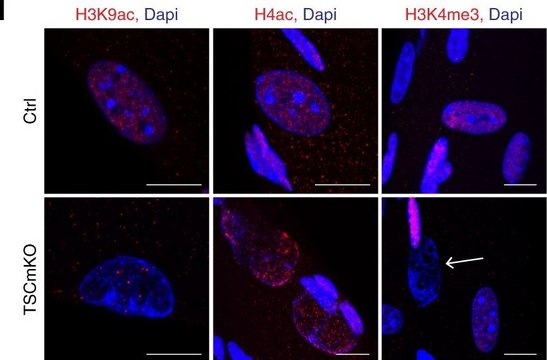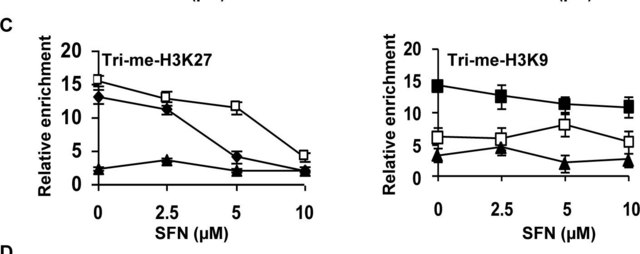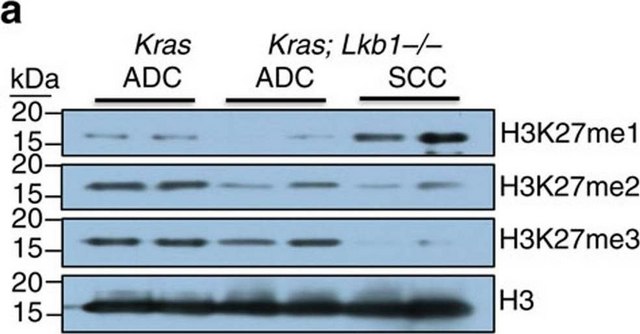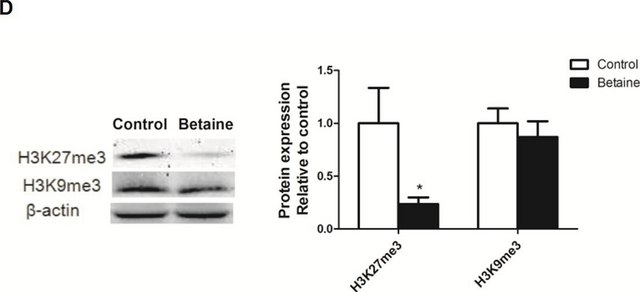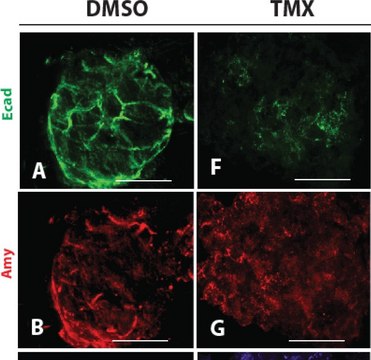04-821
Anti-dimethyl-Histone H3 (Lys27) Antibody, clone 614M, rabbit monoclonal
culture supernatant, clone 614M, from rabbit
Sign Into View Organizational & Contract Pricing
All Photos(3)
Synonym(s):
H3K27me2, Histone H3 (di methyl K27), H3 histone family, member M, H3 histone, family 2, histone 2, H3c, histone cluster 2, H3c
UNSPSC Code:
12352203
eCl@ss:
32160702
NACRES:
NA.41
Recommended Products
biological source
rabbit
Quality Level
antibody form
culture supernatant
antibody product type
primary antibodies
clone
614M, monoclonal
species reactivity
vertebrates
technique(s)
inhibition assay: suitable (peptide)
western blot: suitable
isotype
IgG
NCBI accession no.
UniProt accession no.
shipped in
dry ice
target post-translational modification
dimethylation (Lys27)
Gene Information
human ... H3C1(8350)
General description
Histones are highly conserved proteins that serve as the structural scaffold for the organization of nuclear DNA into chromatin. The four core histones, H2A, H2B, H3, and H4, assemble into an octamer (2 molecules of each). Subsequently, 146 base pairs of DNA are wrapped around the octamer, forming a nucleosome. Histones are modified post-translationally by the actions of enzymes in both the nucleus and cytoplasm. These modifications regulate DNA transcription, repair, recombination, and replication. The most commonly studied modifications are acetylation, phosphorylation, methylation, and ubiquitination. These modifications can alter local chromatin architecture, or recruit trans-acting factors that recognize specific histone modifications (the "histone code" hypothesis). The modifications occur predominantly on the N-terminal and C-terminal tails that extend beyond the nucleosome core particle. Histone H3 is methylated at Lys27 by EZH2, and and overexpression of EZH2 has been associated with both breast and prostate cancers. Methylation of H3K27 is involved in X chroosome inactivation, imprinting, circadian rhythms, and stem cell maintenance. H3K27me2 is a marker of classical heterochromatin.
Specificity
Broad species cross-reactivity expected, based on sequence identity in most species.
Histone H3 dimethylated on Lys27. An unidentified doublet sometimes appears by Western blotting in some lysates at ~35 kDa.
Immunogen
Peptide containing the sequence (ARme2KSA) in which me2 corresponds to dimethyl lysine at residue 27 of human histone H3.
Application
Anti-dimethyl-Histone H3 (Lys27) Antibody, clone 614M is a rabbit monoclonal antibody for detection of dimethyl-Histone H3 (Lys27) also known as H3K27me2, Histone H3 (di methyl K27) & has been validated in WB, PIA.
Western Blot Analysis:
1:1000-1:5000 dilutions of a previous lot of this clone detected dimethyl-Histone H3 in acid extracted proteins from HeLa cells, but did not detect unmethylated recombinant Histone H3 (Catalog # 14-494).
Peptide Inhibition:
0.5-2 µM of histone H3 peptides containing dimethyl-Lys27 abolished detection of histone H3 by anti-dimethyl-Histone H3 (Lys27), clone 614M (1:1000 dilution) in immunoblots of acid extracted proteins from HeLa cells.
1:1000-1:5000 dilutions of a previous lot of this clone detected dimethyl-Histone H3 in acid extracted proteins from HeLa cells, but did not detect unmethylated recombinant Histone H3 (Catalog # 14-494).
Peptide Inhibition:
0.5-2 µM of histone H3 peptides containing dimethyl-Lys27 abolished detection of histone H3 by anti-dimethyl-Histone H3 (Lys27), clone 614M (1:1000 dilution) in immunoblots of acid extracted proteins from HeLa cells.
Quality
Routinely evaluated by western blot in acid extrated protein from mitotic HeLa cells.
Western Blot Analysis:
1:500-2000 dilutions of this lot detected dimethyl-Histone H3 in acid extracted proteins from HeLa cells.
Western Blot Analysis:
1:500-2000 dilutions of this lot detected dimethyl-Histone H3 in acid extracted proteins from HeLa cells.
Target description
17 kDa
Physical form
Unpurified supernatant
Storage and Stability
1 year at -20°C from date of shipment
Handling Recommendations: Upon receipt, and prior to removing the cap, centrifuge the vial and gently mix the solution. Aliquot into microcentrifuge tubes and store at -20°C. Avoid repeated freeze/ thaw cycles, which may damage IgG and affect product performance.
Handling Recommendations: Upon receipt, and prior to removing the cap, centrifuge the vial and gently mix the solution. Aliquot into microcentrifuge tubes and store at -20°C. Avoid repeated freeze/ thaw cycles, which may damage IgG and affect product performance.
Analysis Note
Control
Acid extracted HeLa cell proteins
Acid extracted HeLa cell proteins
WGK
WGK 1
Flash Point(F)
Not applicable
Flash Point(C)
Not applicable
Certificates of Analysis (COA)
Search for Certificates of Analysis (COA) by entering the products Lot/Batch Number. Lot and Batch Numbers can be found on a product’s label following the words ‘Lot’ or ‘Batch’.
Already Own This Product?
Find documentation for the products that you have recently purchased in the Document Library.
D Chen et al.
Science (New York, N.Y.), 284(5423), 2174-2177 (1999-06-26)
The p160 family of coactivators, SRC-1, GRIP1/TIF2, and p/CIP, mediate transcriptional activation by nuclear hormone receptors. Coactivator-associated arginine methyltransferase 1 (CARM1), a previously unidentified protein that binds to the carboxyl-terminal region of p160 coactivators, enhanced transcriptional activation by nuclear receptors
Establishment of histone h3 methylation on the inactive X chromosome requires transient recruitment of Eed-Enx1 polycomb group complexes.
Silva, Jose, et al.
Developmental Cell, 4, 481-495 (2003)
Shinichiro Kato et al.
Cancer discovery, 10(7), 980-997 (2020-04-10)
Epigenetic regulators, when genomically altered, may become driver oncogenes that mediate otherwise unexplained pro-oncogenic changes lacking a clear genetic stimulus, such as activation of the WNT/β-catenin pathway in melanoma. This study identifies previously unrecognized recurrent activating mutations in the G9a
Our team of scientists has experience in all areas of research including Life Science, Material Science, Chemical Synthesis, Chromatography, Analytical and many others.
Contact Technical Service
